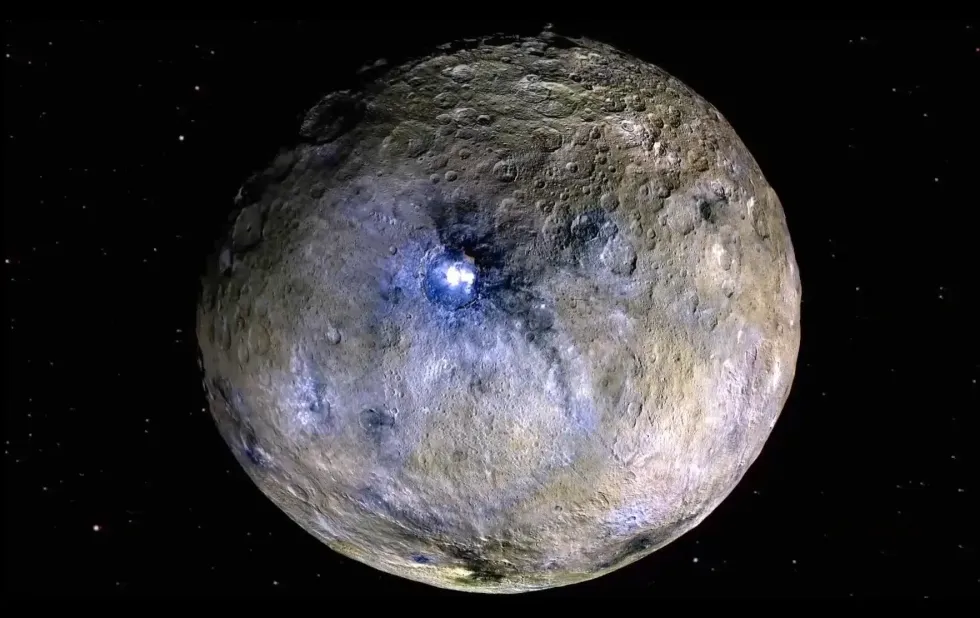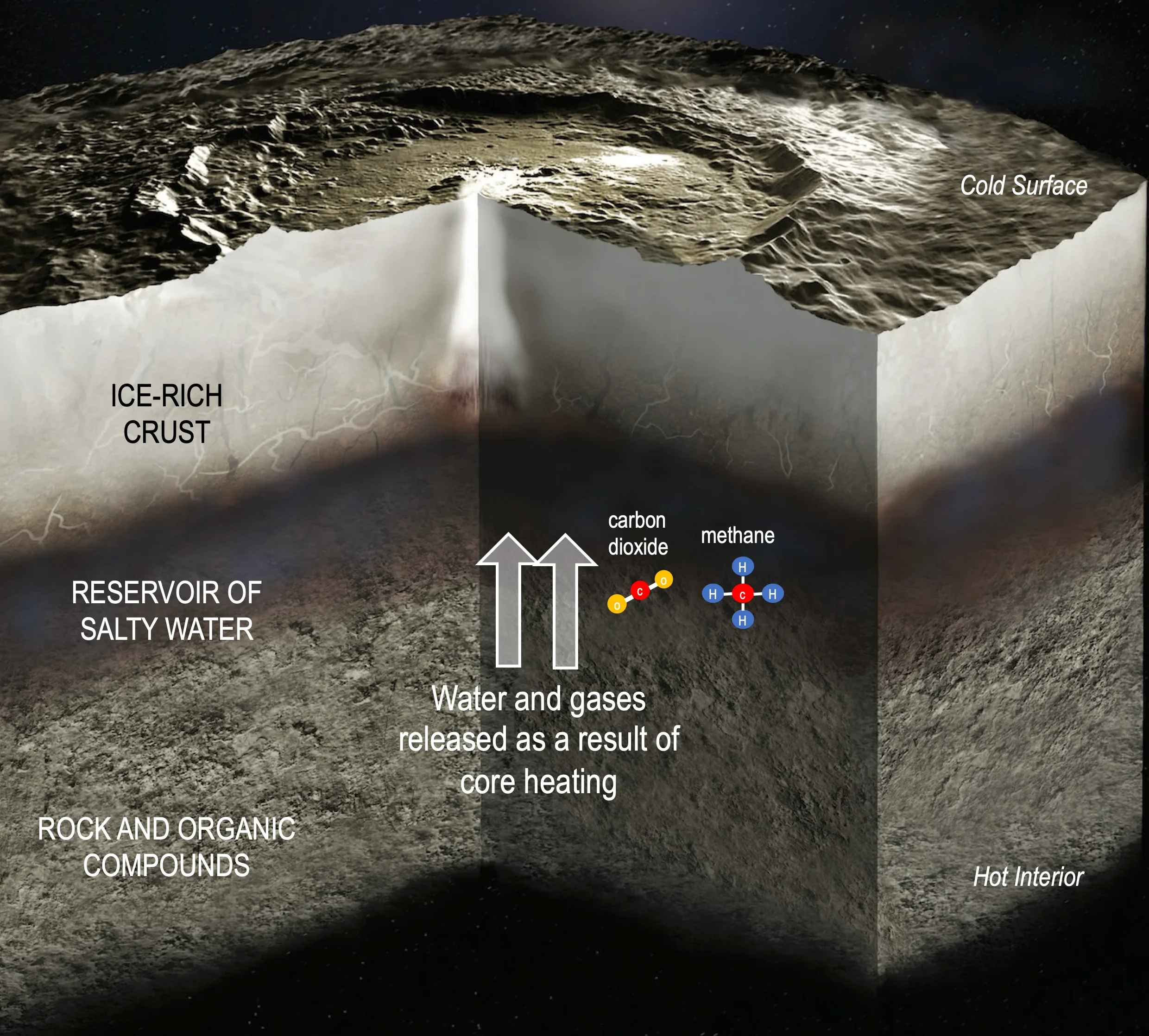'Habitable' dwarf planet in OUR solar system had 'conditions for alien life', Nasa reveals

Lead researcher Sam Courville has hinted at the 'big implications' of the find
Don't Miss
Most Read
A dwarf planet in our own solar system may once have been habitable, new Nasa research has revealed.
Ceres, which lies between Mars and Jupiter in the rocky Asteroid Belt, boasted a "lasting source of chemical energy" similar to that seen on Earth's deep seabeds.
In 2020, scientists discovered that Ceres had an enormous reservoir of saltwater below the surface.
**ARE YOU READING THIS ON OUR APP? DOWNLOAD NOW FOR THE BEST GB NEWS EXPERIENCE**
But a new study, published in the journal Science Advances in August, simulated just what that looked like.

Ceres, which sits between Mars and Jupiter, may once have been habitable
|NASA
Using thermal and chemical models mimicking the temperature and composition of the dwarf planet's interior over time, researchers found a "steady supply" of hot water bubbling up to the surface.
The heat came from the decay of radioactive elements in Ceres's rocky interior when it was a young planet.
And now, the study's lead author Sam Courville has detailed how life - if only single-celled organisms - may have flourished below the surface.
"On Earth, when hot water from deep underground mixes with the ocean, the result is often a buffet for microbes - a feast of chemical energy," he said.
"So it could have big implications if we could determine whether Ceres's ocean had an influx of hydrothermal fluid in the past."
ALIEN LIFE? READ MORE:
- '99.7% chance of alien life’, top scientist declares as three signs give cause for optimism: ‘That is good news’
- Space discovery as 'small population’ of alien life could be 'hiding' on vast ocean of nearby moon
- Is there life on Mars? Scientists claim thick layers of clay could be perfect breeding grounds
- Nasa rover 'discovers ancient life-form' on Mars as 'coral' spotted

In 2020, scientists discovered that Ceres had an enormous reservoir of saltwater below the surface
|NASA
Data from Nasa's Dawn mission, which ended in 2018, previously showed that bright, reflective parts of the dwarf planet's surface are mostly made of salts left over from liquid which bubbled up from below.
The 2020 research confirmed it came from the saltwater reservoir.
While in other research, the Dawn mission also revealed evidence that Ceres also hosts "organic material" in the form of carbon molecules, which are essential in supporting microbial cells.
The presence of water and carbon are two critical pieces of what Nasa has dubbed a "habitability puzzle" on Ceres.
The new findings offer a tantalising third piece: a long-lasting source of chemical energy in the dwarf planet's ancient past which may have made it possible for microorganisms to survive.
However, Nasa has urged caution on the idea of alien life relatively near to Earth.
Ceres likely had "food" available should life have ever arisen there - not life itself - it said.
"The Ceres we know today is unlikely to be habitable," Nasa added.
"It is cooler, with more ice and less water than in the past. There is currently insufficient heat from radioactive decay within Ceres to keep the water from freezing, and what liquid remains has become a concentrated brine."










